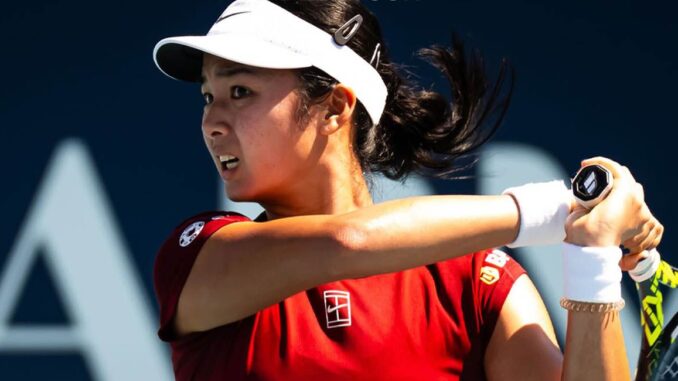
Alex Eala, a Filipino tennis prodigy, has emerged as a rising star in the world of tennis, particularly in the Women’s Tennis Association (WTA). With her remarkable performances on the court and determination to succeed, she is quickly making a name for herself on the international tennis scene. Eala’s journey in tennis has not only highlighted her immense talent but has also contributed to the growing prominence of tennis in Asia, positioning the continent as an emerging hub for the sport.
A Rising Star: Alex Eala’s Breakthrough
Alex Eala’s breakthrough into the international tennis scene came at a very young age. Born on May 23, 2005, Eala’s journey in tennis began in the Philippines, where she honed her skills before taking her talents abroad to compete in international tournaments. Eala has consistently impressed with her ability to compete against seasoned professionals and has demonstrated a level of maturity on the court that belies her age.
In 2021, Eala made history by becoming the first Filipino to win a Grand Slam junior title at the US Open. Her victory in the junior doubles event was a defining moment in her career and showcased her potential as a future star in women’s tennis. This win solidified her position as one of the brightest young talents in the sport. Her success continued with notable performances in WTA tournaments, where she earned crucial rankings and developed a reputation for being a fierce competitor.
Eala’s success is not only due to her raw talent but also her work ethic and dedication to her craft. She trains with top-tier coaches and has a growth mindset that keeps pushing her to improve her game. Her mental toughness, combined with her technical skills, allows her to remain competitive against the best players in the world. With each tournament, Eala continues to demonstrate that she is not just a rising star but a legitimate contender for future WTA titles.
Tennis as the New Hub: The Rise of Tennis in Asia
Alex Eala’s success is part of a larger trend that is making Asia the new hub for tennis. Traditionally, Europe and the United States have been dominant regions in the sport, but recent years have seen a surge of talent emerging from Asia. The rise of players like Naomi Osaka, Li Na, and, more recently, Eala, has increased the visibility of Asian tennis and transformed the region into a powerhouse of the sport.
The rapid rise of tennis in Asia is not just due to individual players’ success but also the growing investment in infrastructure and training facilities across the continent. Countries like China, Japan, and South Korea have invested heavily in tennis academies, training programs, and tournaments, all contributing to the development of homegrown talent. This has created a more competitive environment for players from the region, who are now regularly competing against the best in the world.
Moreover, the WTA and ATP have placed increasing emphasis on Asia, with several prestigious tournaments being held in cities like Beijing, Singapore, and Tokyo. These tournaments provide a platform for players from the region to showcase their skills and gain invaluable experience. For players like Alex Eala, these tournaments offer a stepping stone toward greater achievements on the global stage.
The Future of Tennis: Eala’s Potential and Asia’s Dominance
Looking ahead, Alex Eala’s trajectory in tennis appears bright. With her impressive performances at a young age and her continual development, she has the potential to become one of the leading figures in women’s tennis. As the sport grows in Asia, Eala’s success is likely to inspire the next generation of players, further establishing the region as a major hub for tennis.
Eala is not only a force in tennis because of her talent and skill but also because of her role in shaping the future of the sport. Her success reflects the increasing prominence of tennis in Asia and the continent’s rise as a new hub for global talent in the sport. Through her, the world is witnessing the beginning of a new era in tennis, one in which Asia plays an increasingly central role in the global tennis landscape.
Leave a Reply